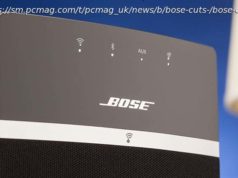Oculus’ Project Santa Cruz looks to bring the power of Rift to an untethered headset.
Facebook-owned Oculus is pushing the boundaries of virtual reality once again. The company has taken the wraps off of its latest and greatest headset, titled Project Santa Cruz, which is aimed at bringing the experience of PC-quality virtual reality to an untethered headset.
That’s a pretty big deal for VR. While mobile virtual reality experiences like Google Daydream and the Samsung Gear VR bring VR to the masses with smartphones, the best-quality virtual reality remains tethered to a computer of some kind. Project Santa Cruz looks to change that.
There’s some serious tech under the hood that enables for this untethered experience, such as, for example, the sensors and trackers. Project Santa Cruz boasts four wide-angle lenses that track both the controllers and your hands. It tracks everything around your head, and even some stuff behind you – which should allow for much more immersive content.
Oculus has had a long road in developing this headset, and this isn’t actually the first time we’ve heard of it. The company first announced it was working on an untethered headset in 2016, but it wasn’t until Oculus Connect 4 that Facebook CEO Mark Zuckerberg took to the stage to show off a revised and apparently fully-functioning version of the headset.
But when can you get your hands on the standalone headset for yourself? And what should you expect it to be able to do? Here’s everything you need to know about the new Oculus Project Santa Cruz virtual reality headset.
Unfortunately, it may be a while before the consumer Project Santa Cruz release date, but developers can start tinkering with it in “early 2018.”
There’s no specific ship date beyond that, so it could be six months or so before developers finally get their hands on it.
That doesn’t mean the general consumer will be able to start buying the headset then – it’ll likely be awhile before the headset is released to the public, especially given Oculus’ track record.
The first Oculus Rift developer kit shipped in 2012, with the second coming in 2014. It wasn’t until early January 2016 that pre-orders opened to the general public. Now, that doesn’t mean that we should expect to have to wait four years for consumer availability. Oculus has grown a lot, and is now owned by Facebook. The company is working to make VR accessible, with an aim to get 1 billion people into VR, and it’s possible that we could even see consumer availability before the end of 2018.
But what about price? That’s something we don’t know yet. The also-new, also-standalone Oculus Go costs $199 in the US, while the Oculus Rift is $399.
Given that Project Santa Cruz is the company’s new flagship VR offering, it’s possible that it could simply replace the Rift at the latter’s $499 price point. Because of all the new tech, however, it’s also totally possible that Project Santa Cruz will be even more expensive than the Rift – we’ll just have to wait and see.
Project Santa Cruz was first unveiled back in 2016, but at the time it was less refined. As you can see from the image below, it basically involved a tiny computer strapped to the back of your head. Now, all that tech has made its way into the headset itself.
Perhaps the biggest new feature is inside-out tracking, which involves putting all the sensors inside the headset rather than having to place cameras and sensors around you. That’s all thanks to the four wide-angle lenses and on-board processing, which can track your hand movements – and controller movements – in real time.
How does the headset track the controllers so accurately? We’ll dive into the hardware inside the controllers in the next section, but it essentially involves the use of tiny infrared LEDs, which is the point controlled by the camera.
Those cameras can continue to track even when the controllers are above the user’s head. This is a notable difference between this headset and Microsoft’s HoloLens design.
The result of all of this tech is that magic six degrees of freedom (6DOF), or the ability to move forward and back, side to side, and up and down in a virtual space. That’s something not all virtual reality headsets offer – especially mobile offerings like Daydream and Gear VR, which rely on smartphones to work.
A lot about Project Santa Cruz is still unknown. For starters, we don’t know the computing specs of the headset. It’s basically a computer in and of itself, so it will need a processor, RAM, and storage,just like any other computer.
Perhaps equally important is battery life. Virtual reality can seriously tax a battery, but with a tethered headset that isn’t a concern. It would be surprising to see an untethered headset that can last more than a few hours, but we’ll obviously have to wait and see what Santa Cruz has to offer.
A big part of the Oculus Project Santa Cruz puzzle is the controllers, and while they are similar to the current Touch controllers, there are a few notable differences. For starters, the controllers feature tiny infrared LEDs, which are tracked by the cameras in the headset.
Apart from that, the Project Santa Cruz controller experience remains much the same.
The controllers still offer a pointer-accessible trigger button, along with a grip button on the side. That’s good news for those that are used to the existing Touch controllers, as it means that they won’t need to get acquainted with a new layout.






